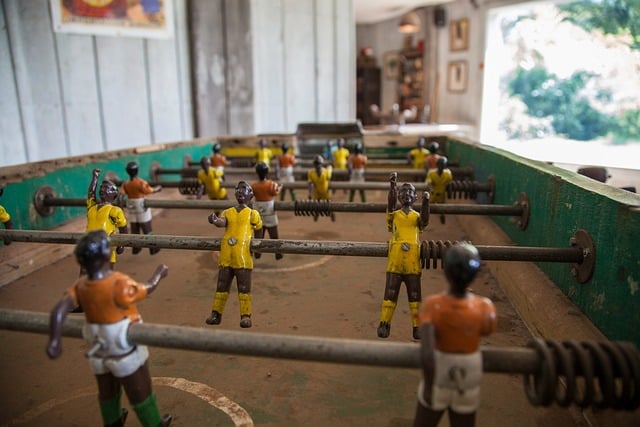A foosball table takes up space, no doubt about it. Not only do you need enough room to place the table, but you also need to have enough space on each side of the rods for up to 4 players to stand comfortably and extend the rods out the entire way.
Over time you might find that you need to move the table from its current location and use the space for another purpose. Often, people think about moving the foosball table outdoors and storing it there.
There are a number of reasons why this is not a good idea full stop and shouldn’t be done.
7 reasons why you shouldn’t store a foosball table outside
- Weather damage: Rain, snow, and extreme temperatures can cause damage to the table, making it difficult to play on or even rendering it unusable. Metal rods and other parts can be negatively impacted which will affect game play.
- Material degradation: The materials used to make foosball tables are often not weather-resistant and can quickly deteriorate when exposed to the elements. Humidity is a particular problem especially for the wooden and metal components.
- Warping: Changes in temperature and humidity levels can cause the table’s surface to warp, making it difficult to play on and affecting the ball’s movement.
- Rust: Metal components of the table are susceptible to rust and corrosion, which can weaken the structure and affect the performance of the game.
- Pest damage: Storing a foosball table outside can attract pests like rodents and insects, which can cause damage to the table and make it unsanitary.
- Loss of value: An outdoor foosball table is more likely to suffer damage and depreciation, making it less valuable over time should you choose to sell it.
- Security issues: Storing a valuable item like a foosball table outside can make it vulnerable to theft or vandalism.
Careful storage of a foosball table outdoors won’t work
There really isn’t a way to carefully store a foosball table outdoors even if you do your best to cover it and protect it. Even placing a tarp over your table isn’t ideal because when humidity and heat rises, the tarp can act as a blanket and trap the humidity and heat which can damage the table.
And a tarp won’t protect against cold, wind and rain especially if the tarp is blown off.
Humidity damages wood and other elements of a foosball table
The exact level of humidity that causes damage to wood can vary depending on the species of wood, as well as its age, thickness, and treatment. However, in general, wood can start to experience problems when the relative humidity (RH) exceeds 60-70%.
At high humidity levels, the moisture content in the wood can increase, causing it to expand and possibly leading to warping, cupping, and cracking. On the other hand, low humidity levels can cause the wood to shrink, leading to gaps and cracks in the surface.
The constant raising and lowering of humidity will also damage the wood parts of a foosball table over time.
It’s important to maintain a relatively stable humidity (and temperature) level to prevent damage to the wood and other parts of your foosball table. Ideally, the relative humidity should be kept between 30-50% for wood to remain in good condition.


